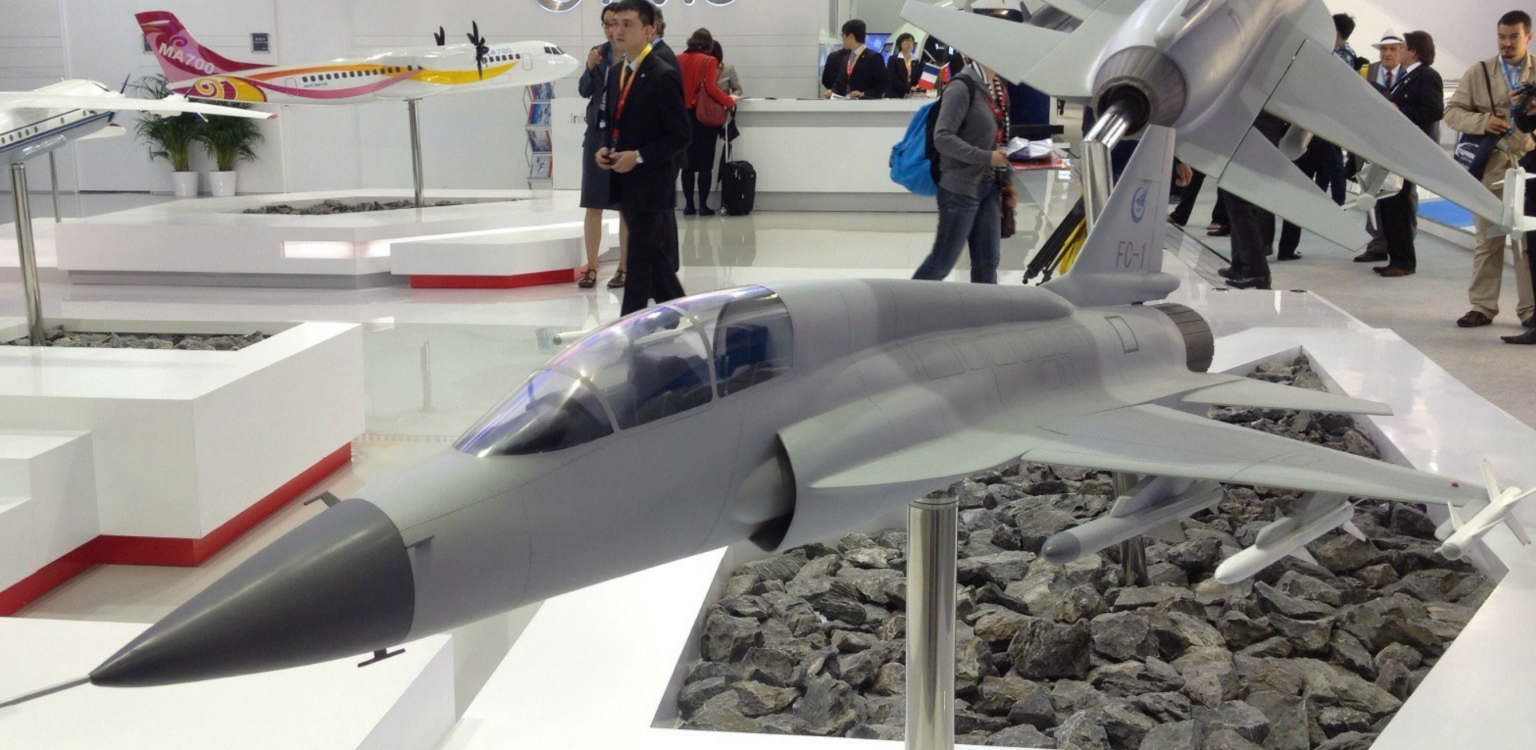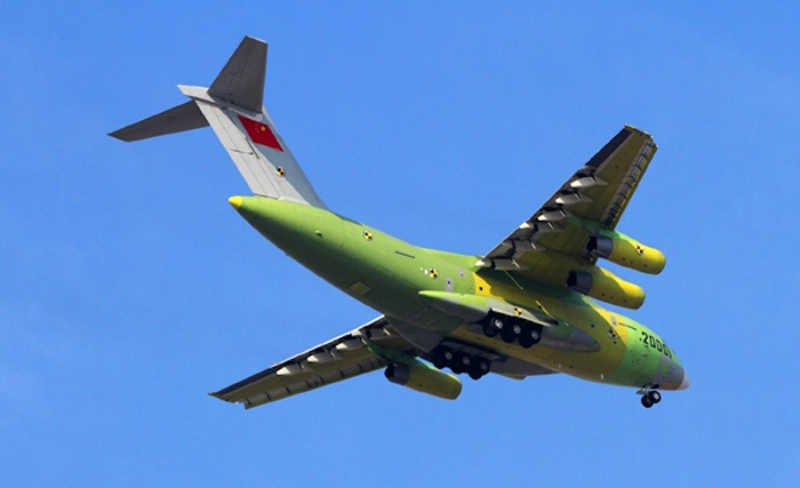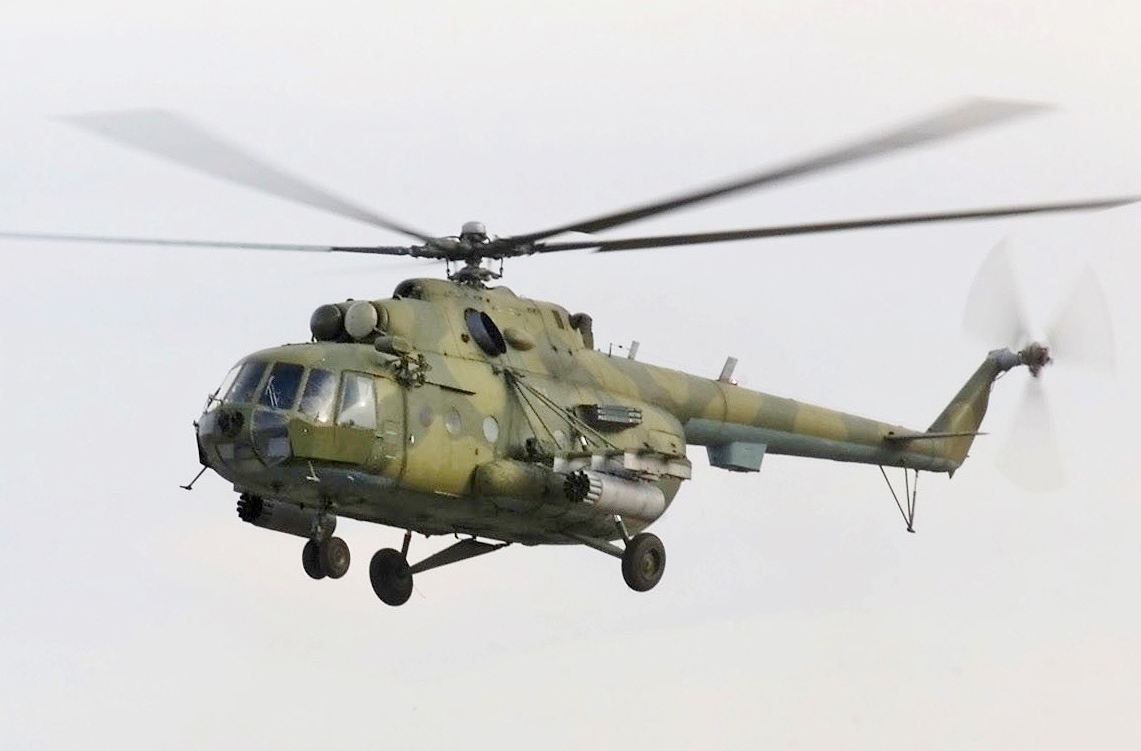3221Views 23Comments

As dual-seat JF-17B enters production, Pakistan eyes induction in 2017
The Pakistan Air Force (PAF) has officially confirmed that the first dual-seat JF-17 Thunder – designated JF-17B – has entered production in Chengdu, China. Although a firm date was not set for the JF-17B’s first flight, the PAF is committed to induct the fighter by April 2017 (i.e. in one year).
Although the JF-17 is now in service with three operational fighter squadrons in the PAF (not including the unit belonging with Combat Commanders School), one may find it surprising that there is no dual-seat JF-17. In fact, even the PAF invests in dual-seat variants of its fighters, such as the F-16A/B and F-16C/D, and the idea of using a dual-seat variant for operational conversion tasks is not a contested idea.
For the past few years, the PAF has basically depended on the use of high fidelity simulators to convert past A-5C, F-7P, Mirage III/5 and F-16 pilots to the JF-17. However, a number of prospective clients (which probably includes the first confirmed customer) desired the availability of a dual-seat variant, which could at least serve as an operational conversion unit (OCU).
It was within this context – i.e. driving sales – that the development of the JF-17B commenced. However, in 2015 the PAF also began to throw its weight behind the dual-seat Thunder. In an interview with Air Forces Monthly[1], Air Chief Marshal Sohail Aman, the current commander of the PAF, spoke of the need for a lead-in fighter trainer (LIFT) platform to train rookie pilots for modern fighter flying.
After evaluating a number of LIFT options, most notably the Hongdu L-15 and KAI/Lockheed Martin T-50, the PAF was unable to commit to a dedicated platform due to high acquisition and maintenance costs. To address the need for a LIFT platform, the PAF opted to pursue the JF-17B. In the future, rookie pilots will basically undergo fighter conversion training on the JF-17B, upon completion of which they could readily be assigned to one of the PAF’s growing number of JF-17 squadrons.
This is a good move on the PAF’s part. For one thing, it saves on the cost of adding an expensive dedicated LIFT platform, both in terms of acquisition and maintenance. For example, the South Korean T-50 could have cost the PAF upwards of $40-45 million U.S. a unit! In addition, the PAF would have to pay for the maintenance of the T-50s. On the other hand, because the PAF already operates the JF-17A, it would have no trouble in inducting the JF-17B; there are no added costs in operating the JF-17B either.
Despite serving as a trainer, the PAF will also operate the JF-17B as a fighter aircraft. The dual-seat design will retain the combat capabilities of the JF-17A. It will be interesting to see how the PAF operates the JF-17B in terms of combat. One of the obvious roles would be to have a weapon systems officer (WSO) to help guide laser-guided bombs and missiles to a target.
The availability of the JF-17B should help the fighter’s sales prospect. In addition to being an optional trainer, the JF-17B could be an easier means of having examiners from potential buyers evaluate the aircraft. The PAF could even try marketing the JF-17B as a stand-alone solution, perhaps as a low-cost LIFT alternative or as a very affordable strike fighter. Nigeria and Azerbaijan might be interested in the idea.
Overall, the introduction of the JF-17B will be welcome, and on many fronts. However, if we are permitted to fantasize, could the JF-17B be adapted to other roles (besides training and strike)? Imagine the idea of outfitting the JF-17B with multiple dedicated electronic warfare (EW) pods? Through this layout, the PAF could use the JF-17 as a dedicated EW fighter, one that could possibly even serve as a battle managing or coordination platform. Vision and funding will determine the kind of roles the JF-17B could take on in the coming years, but we hope the PAF tries exhausting its possibilities.
[1] Alan Warnes. “Exclusive Interview with the new Pakistan Air Force Chief. PAF’s Cutting Edge Grows.” AirForces Monthly. June 2015 #327. Page 68. – See more at: http://quwa.org/2015/08/30/pakistan-and-yak-130-not-likely/#sthash.h5KHA3vO.dpuf



23 Comments
by Shershahsuri
with the dual seat version, JFT now has better chances of marketing for export.
by MT
Good job by China. When ll kamra receive kits for assembly
by Riko
Its not Chines that are converting it into dual seat, Its here in Kamra that are going to be dual seat.
by Ashi Sidhu
Indian airforce have the edge in that it operates twin seat fighters certainly it makes them more effective than pak counterparts just like swat kats .if jf 17 block 3 is twin seat then it will be better match for IAF
by Ashi Sidhu
How could chengdu have different production line certainly all that kamra does is turning the nuts
by Sami Shahid
good news….hope PAF installs a mach 1.8 engine as well.
by MT
cheeni made substandard dual seat trainer version compromising on many features so that pak can brag that their new kit have trainer version as well
by MT
article clearly says that development happened in cheen
by jigsaww
Block 3 won’t be a twin seater and HAF will not be any match for PAF. EVER.
It’s standards are below the rookie pilots of PAF.
Technologically PAF outmatches HAF in every aspect even today with better training, skills, records, global respect, proven battle systems, AWACS, SAMs, and trainers.
But hey whatever works to keep you in clouds.
by jigsaww
Why don’t you two get a room. lol.
by jigsaww
Apparently required development did not happen in your brain.
The slap of shame is that PAF is on verge of introducing a second JF-17 version whereas Tejas is still scared to get down from TATA trucks.
by MT
sad for madrass paki engg who had to import cheeni trucks and tel.baki just can’t make any thing
by saqrkh
AMF at PAC manufactures 58% of the airframe. I reckon we’ll start seeing the JF-17Bs roll out of Kamra once the production rate reaches 25/year.
by saqrkh
The truth is always somewhere in the middle. AMF in Kamra manufactures 58% of the airframe, and imports the remaining 42% along with the engine. We’re not at the stage where we can do a lot of development work in Kamra, that’s for sure, so we’re happy to get a helping hand up from Chengdu. Whatever it takes to learn and move forward 🙂
by Abdul Rashid
Good point. It is not about creating a false sense of pride. It is about getting the result you want in the best manner possible with resources available at any given time. A structured, methodical approach with a longer term goal of achieving greater independence in development and manufacturing is better than setting short term unrealistic goals.
by Last Word
JF-17 is mounted with MIG-33 engine which was discarded by Russia but later purchased by China who did the reverse engineering and handed this junk to Pakistan.
by Javed
Why anybody (and us of all the people) will believe you? And what is your stake or interest ? Just feeling good would not change anything.
by Javed
You are barking up the wrong tree !!
by Mustafa O
Here comes the hindu indian sucker again.
With half of his life dependent on chinese appliances, one way or the other, the mere fact has taken a heavy toll on his sanity.
by Mustafa O
Yup like in case of tweety bird where hal has been turning screws for past 40 years
by Mustafa O
Well sad day for rapians that madrassa engg r so much ahead in execution of their plans. What is the point jerking off on blackee scums consistent failures, where a gen has passed away hoping tweety bird will become a reality
by Mustafa O
Are you MT or modi toady. Cause ur language is very similar to his. Too many roaches
by Last Word
Well, I have stated the facts which you can check on net. Chinese do not have even one sqn of these air-crafts and Pakistan is not been able to sell a single one so far. Thanks to China, Indian skies are safe.